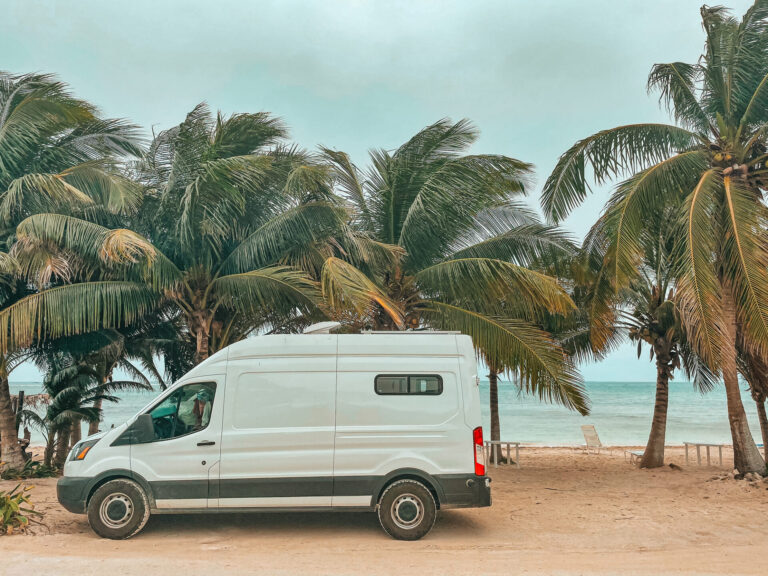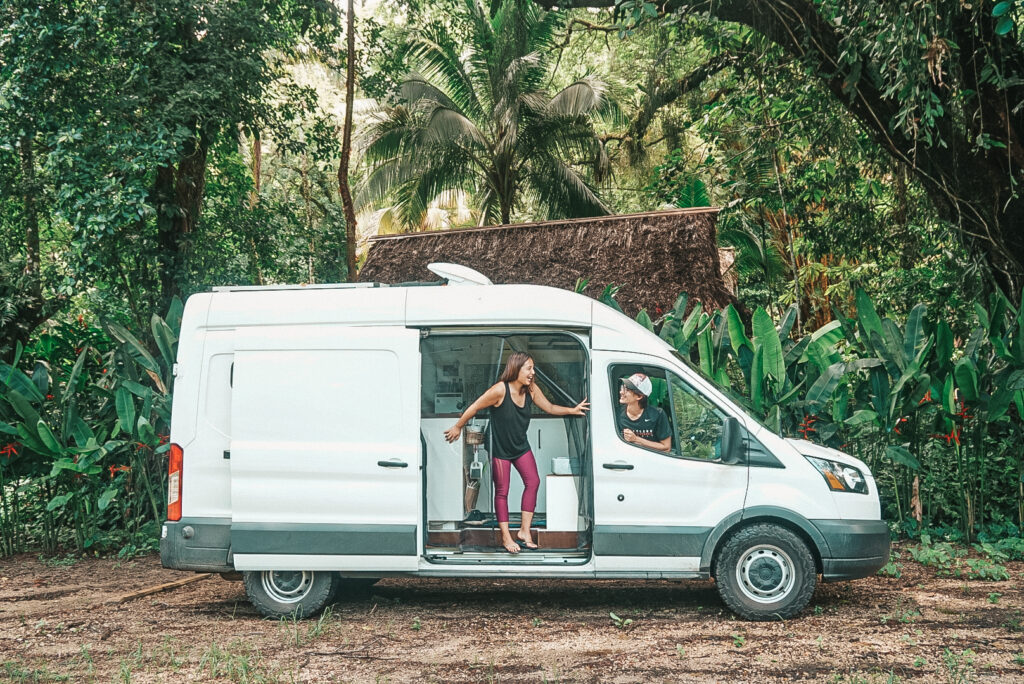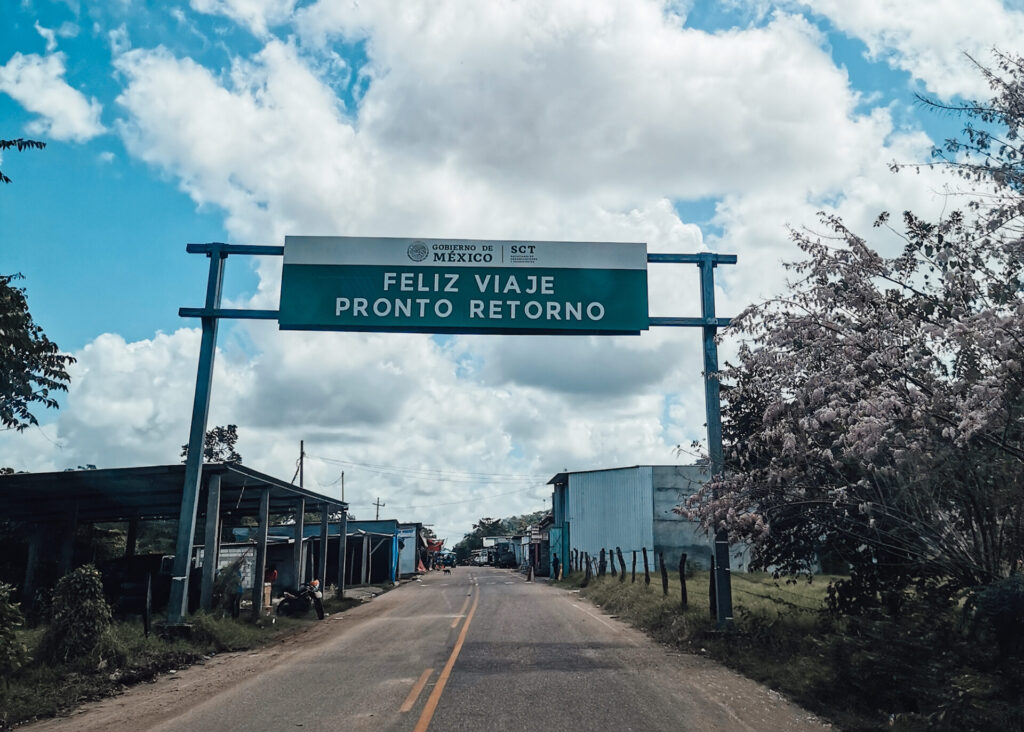
Did you know that it’s possible to travel all of Mexico with your RV? And not only is it technically possible, it’s not nearly as difficult or risky as you might have thought! We know because we spent over a year visiting almost every state in Mexico with our campervan.
So in this post, we want to go over some of the major things to know before you decide to head south with your RV.
1. Organize Your Travel & Vehicle Documents
The first step to ensure a smooth transition across the border to Mexico is to make sure you have all the required documents for yourself and your RV. Unlike when crossing into Canada, the border authorities in Mexico will check to make sure you have each of the below documents.
- Passport: Make sure the passport is valid for at least 6 months
- Driver’s License
- Mexico Auto Insurance: The minimum required insurance is 3rd party liability only and can be purchased at bajabound.com
- Current Vehicle Registration
Make sure to have at least two black & white photocopies for each of the above documents.
2.Get Your FMM & TIP At The Border
When entering Mexico, there are two major documents you will need to obtain.
- FMM (Forma Migratoria Multiple)
- TIP (Temporary Import Permit)
FMM (Forma Migratoria Multiple)
For all intents and purposes the FMM is a tourist visa, although not formally called a “visa”. At the border, you will need to find a “Migracion” (Migration) office and fill out the necessary paperwork to obtain an FMM. All you need to provide is your original passport and a photocopy.
An FMM is usually valid for 180 days, but Mexican immigration agents have been known to issue an FMM for less days at their discretion. So once you receive your FMM, make sure to check how many days the document is valid for.
TIP (Temporary Import Permit)
If you are only planning to travel within Baja California, you DO NOT need to obtain a TIP. This is because the two Mexican states that encompass the entire Baja California are “travel-free” zones.
However, if you plan to visit other regions of Mexico, you will need to stop by the “Aduana” (Customs) office to get your TIP issued. Typically, the customs office is located ~12.5 miles (20KM) along the highway that leads away from the border.
Once you arrive, you will need to bring your passport, driver’s license, current vehicle registration, and proof of Mexico auto insurance (and copies) to the office. This process can be slow and arduous (plan for at least an hour or two) but you will eventually receive an email with a document that ensures your RV is legal to drive in Mexico for as long as your FMM is valid.
How much does a TIP cost? The TIP costs about $50. But there is also a mandatory refundable deposit that costs anywhere between $200-$400, depending on the age of your vehicle. The newer the vehicle, the higher the required deposit.

Additional TIP information:
- Financed RVs: If your RV is under a finance agreement, you will need to show the credit contract & a notarized permission letter from the financing company allowing you to bring the RV into Mexico.
- Obtaining A TIP Online: Though you can technically apply for the TIP online, we highly recommend that you do not do this. It does not save you much time and accidentally entering incorrect information online can seriously delay the issuing of the TIP when you get to the customs office.
- Pay By Credit/Debit Card: Though you are able to pay for the TIP (and deposit) in US dollars, you should really only pay with your credit/debit card. This makes it easier (and with less potential for scams) for you to get your deposit back when you leave Mexico.
For more information regarding Mexico’s temporary import permit, check out Mexperience’s blog post here.
3. Where To Camp & Sleep Overnight
Just like in the US, Mexico has numerous campsites all over the country. Most are basic, but some, like Club Roca Azul, offer full blown services for large RVs.
However, many of the traditional camping websites and apps that you might be accustomed to using in the US are much less useful once you are in Mexico. There are no KOAs or HarvestHost locations in Mexico and significantly less information when scouring FreeCampsites.net.
The one app we use when driving through the country is iOverlander. There are thousands of camping icons (both free and paid) all over the country and an active community ensures that camping information always stays relatively up-to-date. Through the app, you can easily sift through all the camping options in your area and see whether a campground is suitable for big rigs, provides shower facilities, has WIFI, and even if there is a dump station available.

More than just camping. The iOverlander app is also a fantastic resource when looking for information regarding immigration, refilling water tanks, refilling propane tanks, finding mechanics, and more.
4. How To Reduce Risks And Travel Safe In Mexico
Regardless of what you might have heard in the news, Mexico is a surprisingly safe country to travel with an RV. While drug-related violence does persist in the country, you will likely not experience any of this as a tourist. And though petty theft can happen, we follow the following rules to help minimize our risk of being caught in the wrong place at the wrong time.
- Don’t Drive At Night – Unless we’re absolutely certain of the safety of our area, we always plan our days to make sure our camper is safely parked at a campsite before 4pm. This is also because streets are poorly lit at night and you never know if there are animals or people wandering around unseen on the street.
- Don’t Wild Camp In The Cities – Cities are a hotbed for petty crime and a parked RV is an easy target. When we want to visit a city, we usually stay at a hotel (or Airbnb) and keep the RV in a gated parking lot with 24-hour security.
- Don’t Pay Bribes – Getting pulled over by the Mexican police for some made-up infraction is a very real possibility. The police usually threaten with a large fine and then agree to eliminate the fine for a cash bribe. You should never pay the bribe. Ever. Not only does paying the bribe reward the corrupt police, but it actually increases your chance of being pulled AGAIN over further down the road by the officer’s colleague, who is also looking for easy money. Instead, be nice and simply insist on being given the receipt so you can pay the penalty at the police station. 99% of the time the police won’t issue you the receipt and just let you go with a ‘warning’.

Conclusion
Every year thousands of Americans and Canadians bring their RVs across the border to Mexico. And if they can do it, you can absolutely do it, too. It does involve learning a new language and stepping outside of your comfort zone, but you’ll be surprised at your ability to adapt to new situations and as a reward you get to experience a completely different culture.
We loved our time in Mexico and we know you will as well. If you have any questions regarding traveling Mexico in an RV, feel free to email us at [email protected].
Happy traveling!
How To Contact Us
For more campervan living & building tips, check out our blog: www.asobolife.com.
Or for more on our current Pan-American road trip to Argentina visit us on Instagram: @asobo-life
Read more from Asobo Life:

